Hey Gout Gourmet community! Whether you're newly diagnosed or still figuring out what those sudden, excruciating toe attacks are all about, this comprehensive guide will walk you through everything you need to know about gout management in 2025.
Table of Contents
What Is Gout? Understanding the Basics
Gout is the most common inflammatory arthritis affecting over 9 million Americans, and understanding what's happening in your body is the first step toward effective management 234. When uric acid levels in your blood become too high (a condition called hyperuricemia), needle-like crystals form in your joints, causing the sudden, severe pain that many describe as feeling like your joint is "on fire" 4476.

Microscopic view of uric acid crystals associated with gout, illustrating their characteristic elongated and translucent structure
Key Facts Every Beginner Should Know:
The Four Stages of Gout: Your Disease Timeline
Understanding gout progression helps you recognize where you are in your journey and what to expect next 4344. Recent 2025 research emphasizes early intervention to prevent advancement through these stages 248.
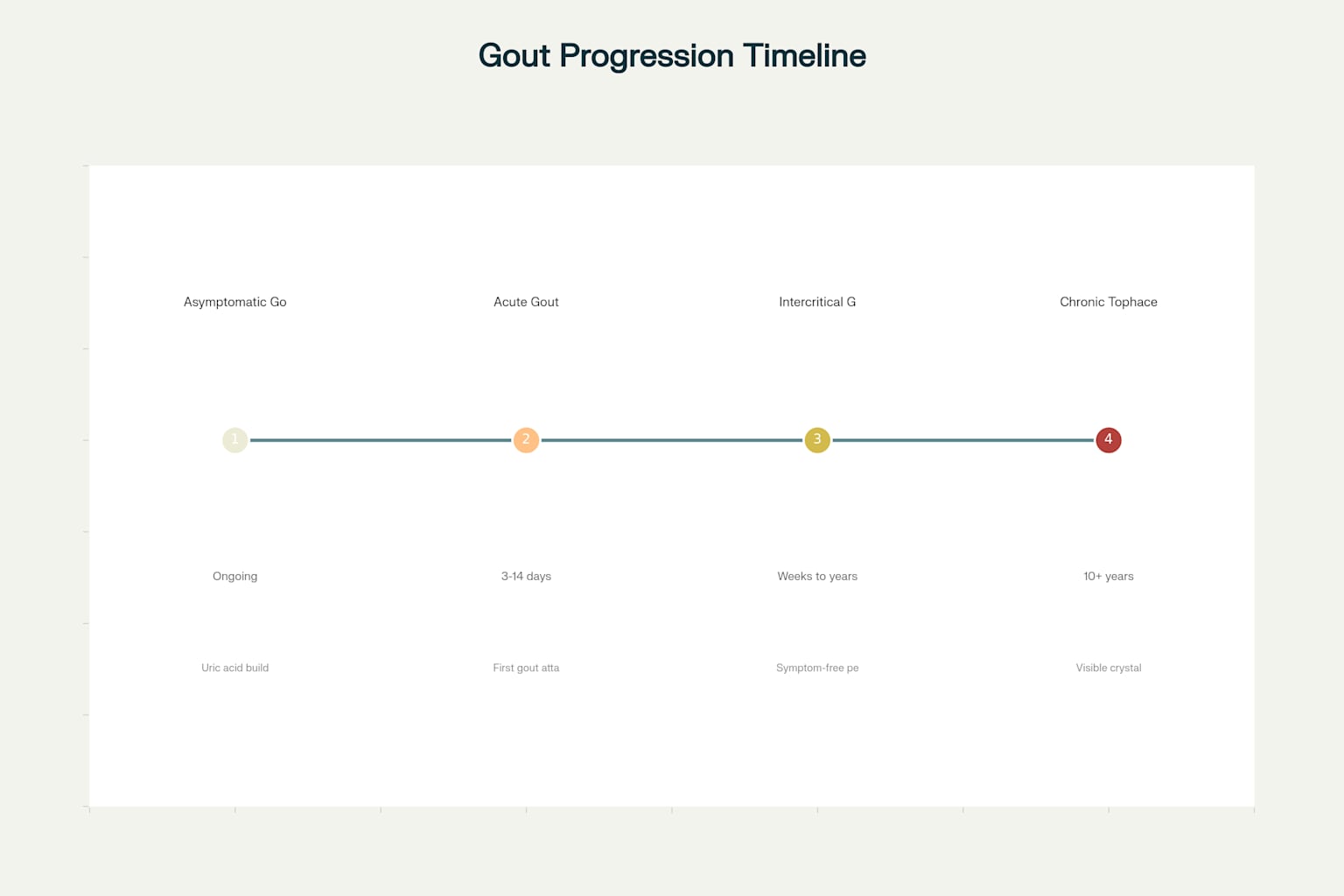
The Four Stages of Gout: A Beginner's Guide to Disease Progression
Stage 1: Asymptomatic Hyperuricemia
This silent stage can last years without symptoms while uric acid builds up in your blood 4344. Normal uric acid levels should be under 6 mg/dL for women and 7 mg/dL for men 3342.
Stage 2: Acute Gout Attack
Your first painful flare typically strikes the big toe with sudden, severe pain, redness, and swelling 434447. Without treatment, attacks last 3-14 days 4344.
Stage 3: Intercritical Gout
These are the symptom-free periods between attacks, which can last weeks to years but get shorter over time 4344. Importantly, uric acid continues building up even during these "quiet" periods 43.
Stage 4: Chronic Tophaceous Gout
Large crystal deposits called tophi form visible lumps under the skin, causing joint deformity and constant pain 4344. This stage typically develops after 10+ years without proper treatment 4345.
Recognizing Gout Symptoms: When to Seek Help
Classic Gout Attack Warning Signs:
Immediate Medical Attention Required:
2025 Gout Treatment Essentials: The Modern Approach
Medication Management: Your Foundation for Success
The cornerstone of modern gout treatment has evolved significantly in 2025, with updated guidelines emphasizing early, aggressive intervention 248.

A bottle of allopurinol pills, a key medication for gout management, shown against a blue background with other pill bottles blurred in the background ceufast
Urate-Lowering Therapy (ULT):
Flare Prevention Protocol:
Revolutionary 2025 Treatment Updates
Your Gout Diet Guide: Foods That Help vs. Hurt
Understanding which foods to embrace and which to avoid is crucial for managing your uric acid levels and preventing flares 123446.
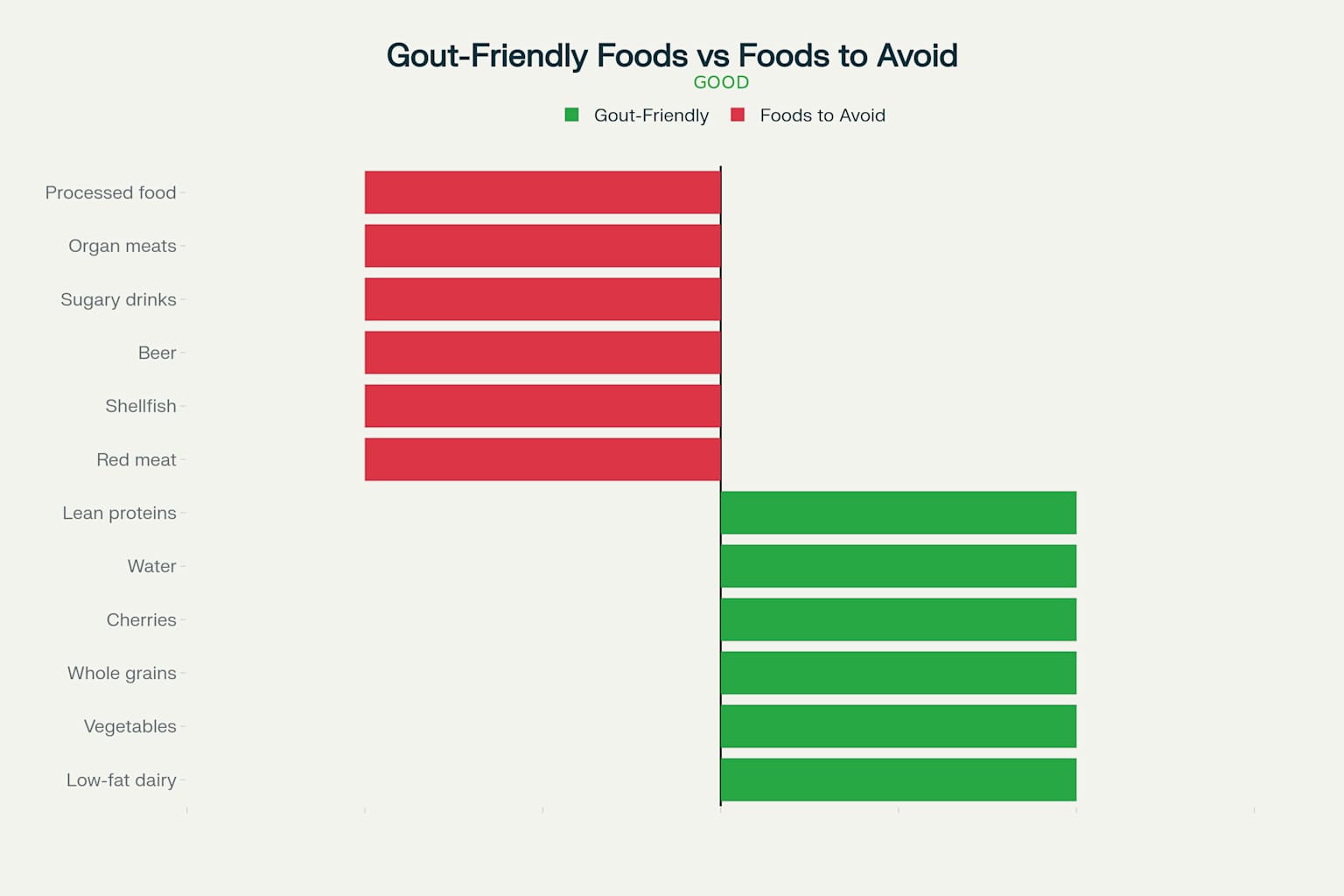
Gout Diet Guide: Foods to Enjoy vs Foods to Avoid for Better Management
Foods to Completely Avoid (High Purine Content)
Red Meat and Organ Meats:
These contain 100-200mg purines per 100g serving 29
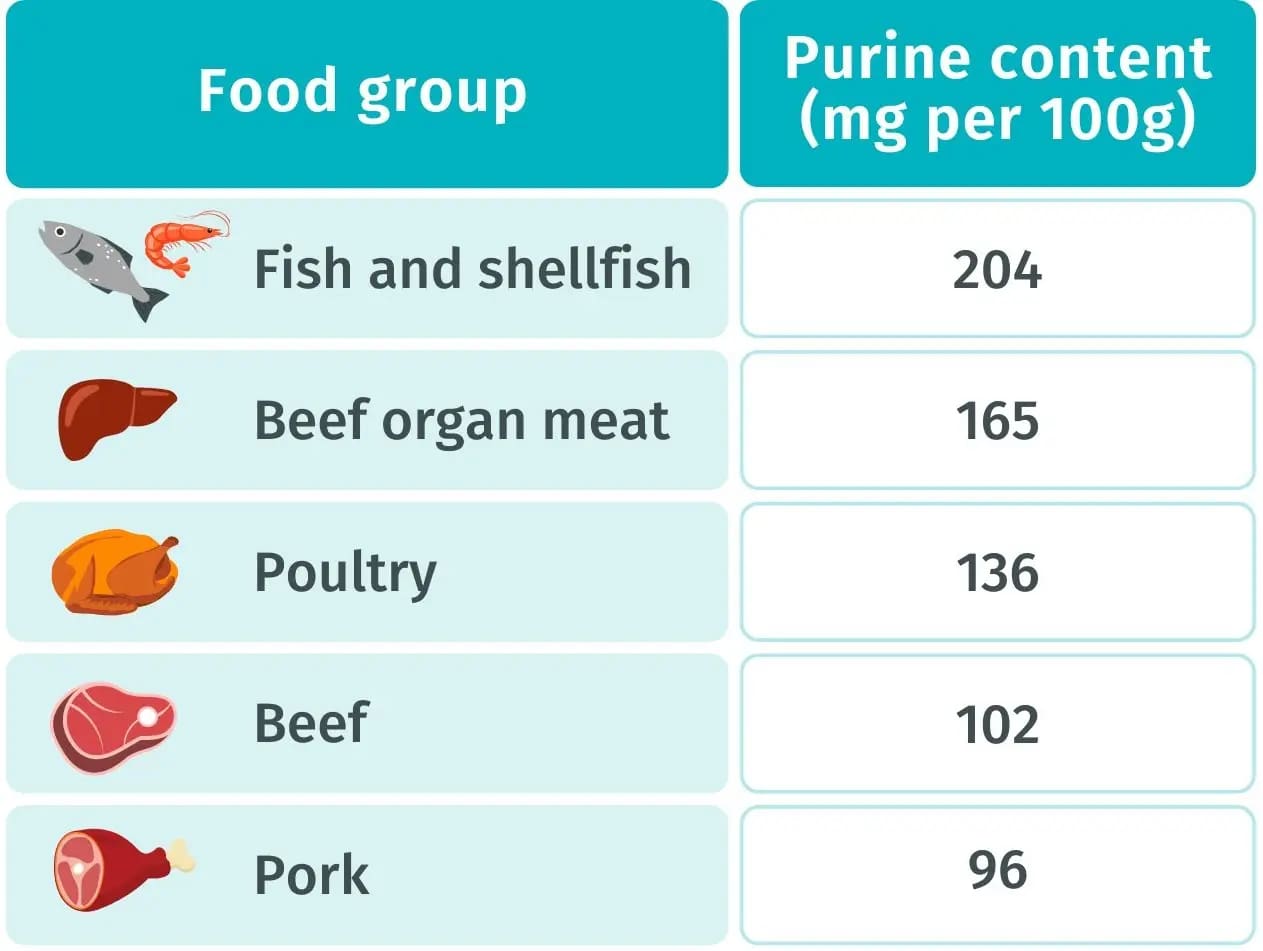
Table showing purine content in various foods to avoid for gout management teamnutrition
Seafood High-Risk Category:
Beverages to Eliminate:
Foods to Encourage Daily
Gout-Friendly Protein Sources:
Beneficial Plant Foods:
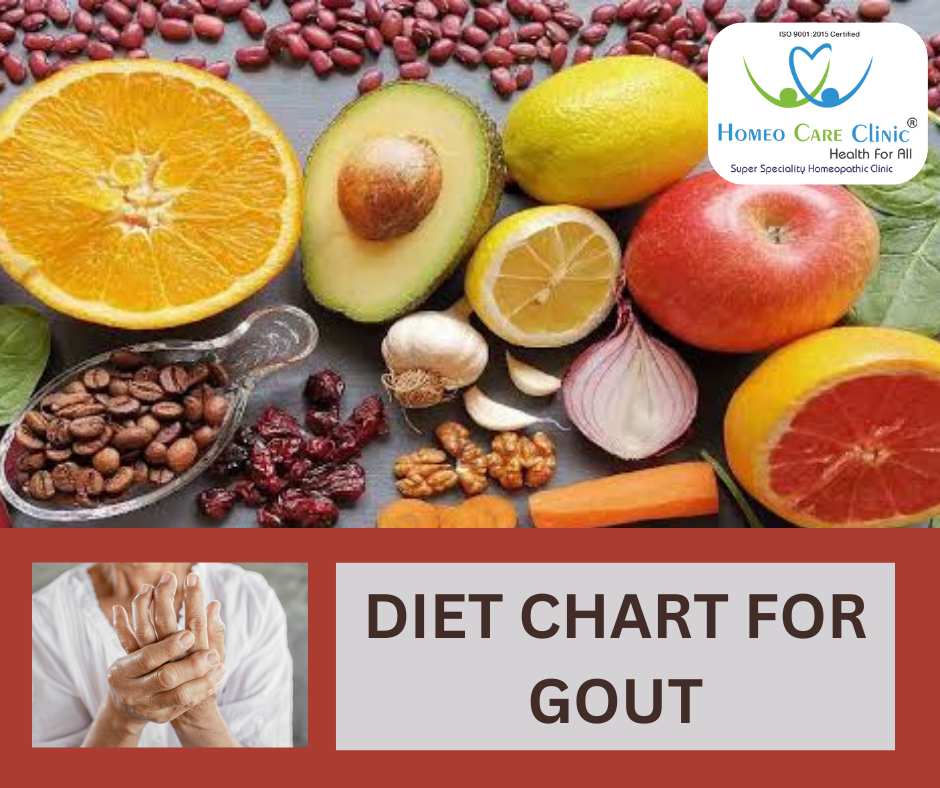
Diet chart for gout featuring low-purine fruits, vegetables, nuts, and other healthy foods beneficial for uric acid control homeocareclinic
Special Foods for Gout Management
Cherries: Nature's Gout Fighter
Studies demonstrate that consuming 1-2 cups of cherries daily may reduce flare risk by up to 35% 576263. Both sweet and tart cherries show beneficial effects 62.
Hydration Heroes:
Lifestyle Modifications for Gout Prevention
Hydration: Your Daily Defense Strategy
Daily Hydration Goals:
Monitor urine color—aim for pale yellow 39
Weight Management: A Critical Component
Effective Weight Management:
Maintain BMI between 18.5-24.9 39
Exercise Guidelines for Gout Patients
Recommended Activities:
During flares: rest affected joints while maintaining gentle movement elsewhere 60
Managing Gout Flares: Your Emergency Action Plan
Immediate Flare Response:
Medication Options for Acute Attacks:
Never stop your urate-lowering therapy during a flare—this is a critical 2025 guideline update 81073.
Understanding Gout Medications: A Beginner's Guide
Allopurinol: The Gold Standard
Key Allopurinol Facts:
Important Safety Information:
Alternative Medications
Febuxostat (Uloric):
Colchicine for Prevention:
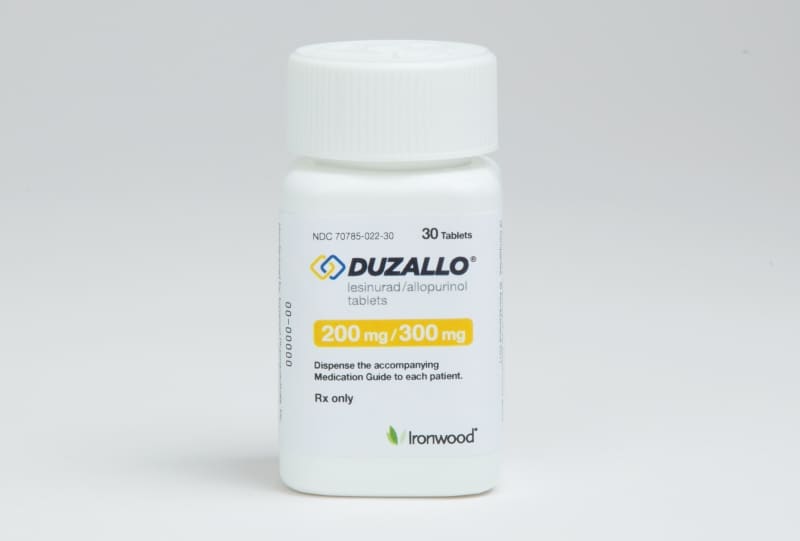
A bottle of DUZALLO medication for gout treatment fiercepharma
Monitoring Your Progress: Tracking Success
Essential Blood Tests
Uric Acid Level Monitoring:
Additional Monitoring:
Lifestyle Tracking
Symptom Documentation:
Daily Metrics:
Common Beginner Mistakes to Avoid
Medication Errors
Avoiding colchicine prophylaxis due to side effect fears 69
Dietary Misconceptions
Returning to old eating habits too quickly 64
Lifestyle Pitfalls
Ignoring stress management 63
When to See a Specialist
Rheumatologist Referral Indicators
The Future of Gout Treatment: 2025 and Beyond
Emerging Therapies
Advanced Treatment Options:
Personalized Medicine Approaches
Your 30-Day Gout Management Quick-Start Plan
Week 1: Foundation Setting
Schedule comprehensive blood work including uric acid levels
Begin detailed food and symptom diary
Start daily hydration tracking
Research rheumatology specialists in your area
Week 2: Treatment Initiation
Begin allopurinol with appropriate colchicine coverage
Monitor for any medication side effects
Implement dietary modifications gradually
Establish gentle exercise routine
Week 3: Habit Development
Create consistent daily medication schedule
Fine-tune diet based on personal triggers
Gradually increase daily water intake
Add stress management techniques
Week 4: Progress Assessment
Follow-up blood tests to check uric acid response
Review symptom diary with healthcare provider
Adjust medications or doses as needed
Develop long-term management strategy
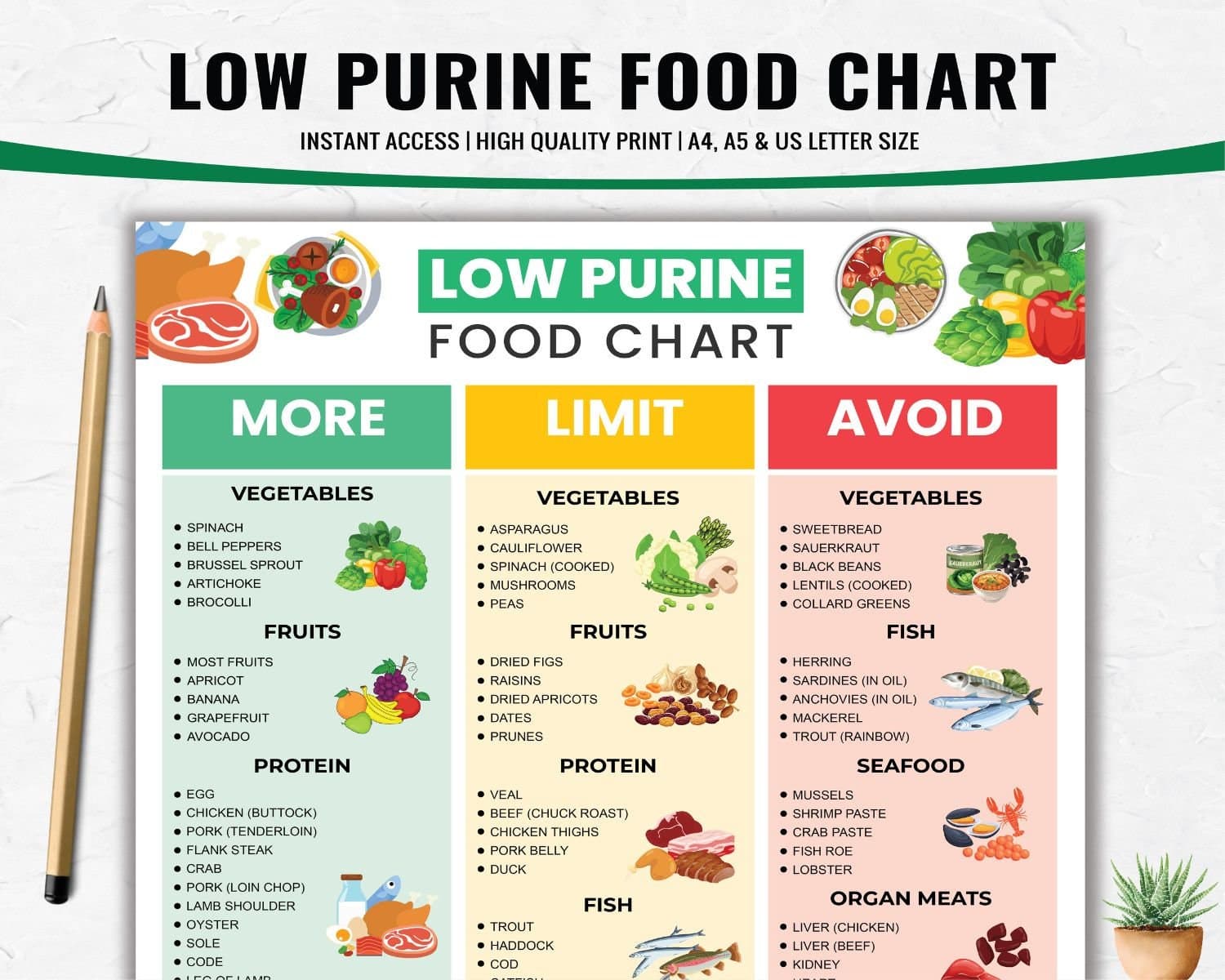
A low purine foods chart categorizing foods into more, limit, and avoid groups etsy
Key Takeaways for Gout Success
Essential Points to Remember:
Your Gout-Free Future Starts Today
Managing gout successfully requires a comprehensive approach combining evidence-based medical treatment with smart lifestyle choices 2839. The 2025 treatment landscape offers more options and better outcomes than ever before, giving you every reason to be optimistic about your gout-free future 248.
Remember, every small step you take today—whether it's taking your medication consistently, choosing gout-friendly foods, or staying properly hydrated—brings you closer to long-term success 39. The Gout Gourmet community is here to support you every step of the way with practical recipes, treatment updates, and real-world advice from fellow gout warriors who've successfully taken control of their condition.
Ready to transform your relationship with gout? Start implementing these evidence-based strategies today, and don't forget to bookmark this guide for future reference, or subscribe to us for more on gout. Your journey to pain-free living begins now!
This comprehensive guide provides general information based on current medical evidence and should complement, not replace, professional medical advice. Always consult with your healthcare provider before making significant changes to your treatment plan.
Sources and References:
This article references information from the latest clinical research, including recent publications from major rheumatology journals, updated treatment guidelines from the American College of Rheumatology, and evidence-based reviews from leading medical institutions worldwide 248910131718.
